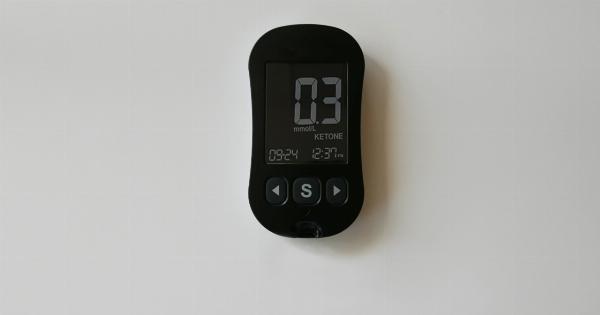High blood pressure, also known as hypertension, is a common health condition that affects millions of people worldwide. It is often referred to as the silent killer because it usually has no symptoms and can go unnoticed for years.
However, if left untreated, high blood pressure can lead to severe health problems, including heart attacks, strokes, and heart failure.
When we talk about blood pressure, we usually refer to two numbers: systolic pressure and diastolic pressure. Systolic pressure is the top number and represents the pressure in your arteries when your heart beats and pumps blood.
Diastolic pressure, on the other hand, is the bottom number and shows the pressure in your arteries when your heart is at rest between beats.
The Importance of Systolic Pressure
Systolic pressure is highly significant because it reflects the force with which the heart is pumping blood throughout the body.
A higher systolic pressure means that the heart has to work harder to circulate blood, putting extra strain on the heart muscles and blood vessels. Over time, this can lead to damage and increase the risk of developing heart-related diseases.
Several factors can contribute to an increase in systolic pressure. Aging naturally causes blood vessels to become stiffer and less elastic, resulting in higher systolic pressure.
Other risk factors such as obesity, smoking, stress, and a sedentary lifestyle can also contribute to elevated systolic pressure.
The Link Between Systolic Pressure and Heart Health
The relationship between systolic pressure and heart health is well-established. Numerous studies have shown that reducing systolic pressure can significantly lower the risk of heart disease and related complications.
The Systolic Blood Pressure Intervention Trial (SPRINT), for example, demonstrated that lowering systolic pressure to a target of less than 120 mm Hg resulted in a 25% reduction in the risk of heart-related events compared to a target of less than 140 mm Hg.
Elevated systolic pressure puts a strain on the heart, causing it to work harder and making it more susceptible to damage.
This can lead to the development of conditions such as atherosclerosis (hardening of the arteries), coronary artery disease, and heart failure. By lowering systolic pressure, we can alleviate the burden on the heart and reduce the risk of these life-threatening conditions.
Methods to Lower Systolic Pressure
Lowering systolic pressure often involves making lifestyle changes and, in some cases, using medication. Here are some effective methods to reduce systolic pressure:.
1. Adopting a Healthy Diet
A healthy diet plays a crucial role in managing blood pressure.
The DASH (Dietary Approaches to Stop Hypertension) diet, rich in fruits, vegetables, whole grains, low-fat dairy products, and lean proteins, has been proven to effectively lower blood pressure. It is recommended to limit the intake of sodium, processed foods, saturated fats, and added sugars.
2. Regular Exercise
Physical activity is an essential component of a heart-healthy lifestyle. Engaging in regular aerobic exercises such as brisk walking, swimming, or cycling can help lower systolic pressure.
Aim for at least 150 minutes of moderate-intensity exercise per week, or 75 minutes of vigorous exercise.
3. Maintaining a Healthy Weight
Obesity is a significant risk factor for high blood pressure. Losing excess weight can have a positive impact on systolic pressure. Adopting a balanced diet and increasing physical activity can help achieve and maintain a healthy weight.
4. Reducing Sodium Intake
Excessive sodium consumption can lead to fluid retention, which increases blood volume and raises blood pressure. Limiting sodium intake, by avoiding processed foods and using less salt in cooking, can help lower systolic pressure.
5. Managing Stress
Chronic stress can contribute to high blood pressure. Finding healthy ways to manage stress, such as practicing relaxation techniques, meditation, or engaging in hobbies, can help reduce systolic pressure and promote overall heart health.
6. Limiting Alcohol Consumption
Drinking excessive alcohol can raise blood pressure and damage the heart. It is recommended to limit alcohol intake to moderate levels, which means up to one drink per day for women and up to two drinks per day for men.
7. Medication
In some cases, lifestyle changes may not be sufficient to control systolic pressure adequately.
Your healthcare provider may prescribe medication, such as diuretics, ACE inhibitors, angiotensin II receptor blockers, or calcium channel blockers, to help lower blood pressure to a healthy range.
The Benefits of Lowering Systolic Pressure
Lowering systolic pressure is not only crucial for heart health but also offers several other benefits. By reducing systolic pressure, you can:.
– Decrease the risk of heart attacks and strokes.
– Improve overall cardiovascular health.
– Enhance kidney function.
– Lower the risk of developing aortic aneurysms.
– Decrease the likelihood of cognitive decline and dementia.
– Improve quality of life.
Conclusion
Maintaining a healthy systolic pressure is vital for a healthier heart and overall well-being.
By adopting a heart-healthy lifestyle, including a balanced diet, regular exercise, weight management, stress reduction, and limiting alcohol consumption, you can effectively lower systolic pressure. If necessary, medication can be prescribed by your healthcare provider to further control blood pressure. Remember, taking care of your heart starts with managing systolic pressure, and a healthier heart leads to a healthier life.































